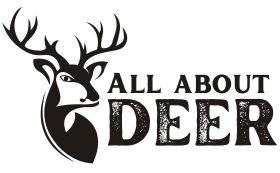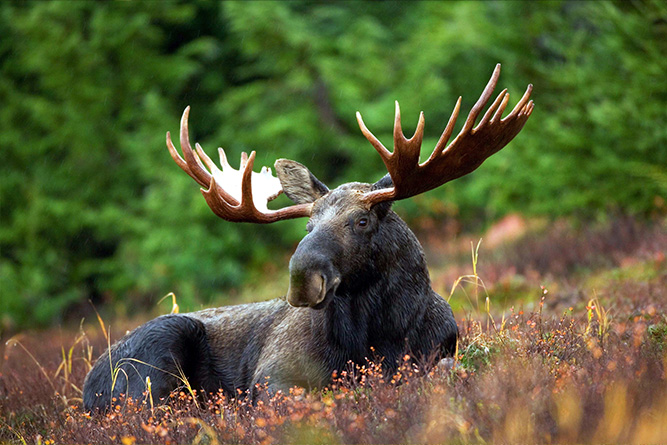The Moose, often regarded as the gentle giant of the forest, is an iconic and fascinating member of the deer family. These colossal creatures, with their massive antlers and imposing stature, captivate the imagination of wildlife enthusiasts around the world.
Table of Contents
Species Data
- Class: Mammalia
- Order: Artiodactyla
- Family: Cervidae
- Scientific Name: Alces alces
- Life Span: 15 to 25 years
- Height: Up to 180-220 cm (71-87 inches)
- Weight: 800-1,600 pounds (360-725 kilograms)
Description
Moose are the largest deer species, known for their towering size and distinctive palmate antlers. They have a hump-like bulge on their shoulders and a long, horse-like face. Despite their imposing appearance, they are generally gentle herbivores.
Appearance
These magnificent creatures have dark brown fur, often with a lighter-colored snout. Both males (bulls) and females (cows) sport impressive antlers, although those of bulls are typically larger and more elaborately branched.
Behavior
Moose are solitary animals, preferring the peace and solitude of the forest. They are excellent swimmers and can often be seen wading in lakes and rivers, foraging for aquatic plants.
Habitat
They inhabit a variety of environments, from boreal forests to wetlands and tundra. Moose are well-adapted to cold climates and are often found in regions with snowy winters.
Diet and Nutrition
Their diet consists of a diverse array of vegetation, including twigs, leaves, aquatic plants, and grasses. Their long legs and powerful jaws enable them to reach high branches and aquatic plants.
Mating Habits
Moose typically mate in the fall, with a gestation period of about 230 days. Cows give birth to one or two calves, which they protect and nurture in their early months.
Mating Behavior
- Reproduction Season: Fall
- Pregnancy Duration: Approximately 230 days
- Baby Carrying: Cows nurture and protect their calves
- Independent Age: Calves become independent at around 6 months
- Female Name: Cow
- Male Name: Bull
- Baby Name: Calf
5 Fun Facts for Kids
- Moose are excellent swimmers and can submerge themselves completely underwater.
- Despite their size, they are surprisingly fast runners, capable of reaching speeds up to 35 miles per hour.
- Their antlers can span up to six feet across.
- Moose communicate through vocalizations, including grunts and bellows.
- Moose have a “bell” or dewlap under their throats, which can be as long as 18 inches!


